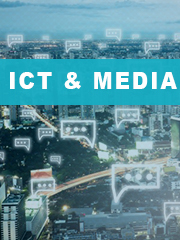The global Solar Farm Automation market was valued at US$ 260.6 million in 2022 and is projected to reach US$ 353.2 million by 2029, at a CAGR of 4.4% during the forecast period. The influence of COVID-19 and the Russia-Ukraine War were considered while estimating market sizes.
The USA market for Global Solar Farm Automation market is estimated to increase from USD million in 2022 to reach USD million by 2030, at a CAGR during the forecast period of 2023 through 2030.
The China market for Global Solar Farm Automation market is estimated to increase from USD million in 2022 to reach USD million by 2030, at a CAGR during the forecast period of 2023 through 2030.
The Europe market for Global Solar Farm Automation market is estimated to increase from USD million in 2022 to reach USD million by 2030, at a CAGR during the forecast period of 2023 through 2030.
This report aims to provide a comprehensive presentation of the global market for Solar Farm Automation, with both quantitative and qualitative analysis, to help readers develop business/growth strategies, assess the market competitive situation, analyze their position in the current marketplace, and make informed business decisions regarding Solar Farm Automation. This report contains market size and forecasts of Solar Farm Automation in global, including the following market information:
- Global Solar Farm Automation Market Revenue, 2018-2023, 2024-2030, ($ millions)
- Global top five companies in 2022 (%)
The solar tracker segment dominated the solar farm automation market and accounted for close to 70% of the market share. A sharp reduction in the prices of solar trackers and high device efficiency are some of the leading factors driving the growth of this market segment.
We surveyed the Solar Farm Automation companies, and industry experts on this industry, involving the revenue, demand, product type, recent developments and plans, industry trends, drivers, challenges, obstacles, and potential risks.
Total Market by Segment:
Global Solar Farm Automation Market, by Type, 2018-2023, 2024-2030 ($ millions)
Global Solar Farm Automation Market Segment Percentages, by Type, 2022 (%)
- Solar Tracker
- Distributed Control System (DCS)
- Supervisory Control and Data Acquisition (SCADA)
- Programmable Logic Controller (PLC)
- Others
Global Solar Farm Automation Market, by Application, 2018-2023, 2024-2030 ($ millions)
Global Solar Farm Automation Market Segment Percentages, by Application, 2022 (%)
- Individual Farm
- Contracted Farm
- Others
Global Solar Farm Automation Market, By Region and Country, 2018-2023, 2024-2030 ($ Millions)
Global Solar Farm Automation Market Segment Percentages, By Region and Country, 2022 (%)
- North America (United States, Canada, Mexico)
- Europe (Germany, France, United Kingdom, Italy, Spain, Rest of Europe)
- Asia-Pacific (China, India, Japan, South Korea, Australia, Rest of APAC)
- The Middle East and Africa (Middle East, Africa)
- South and Central America (Brazil, Argentina, Rest of SCA)
Competitor Analysis
The report also provides analysis of leading market participants including:
- Key companies Solar Farm Automation revenues in global market, 2018-2023 (estimated), ($ millions)
- Key companies Solar Farm Automation revenues share in global market, 2022 (%)
key players include:
- ABB
- Siemens
- AllEarth Renewables
- DEGER
- Emerson Electric
- First Solar
- General Electric
- Mecasolar
- Yokogawa Electric
- Honeywell International
- Mitsubishi Electric
- Rockwell Automation
- Array Technologies
- Smarttrak Solar Systems
Outline of Major Chapters:
Chapter 1: Introduces the definition of Solar Farm Automation, market overview.
Chapter 2: Global Solar Farm Automation market size in revenue.
Chapter 3: Detailed analysis of Solar Farm Automation company competitive landscape, revenue and market share, latest development plan, merger, and acquisition information, etc.
Chapter 4: Provides the analysis of various market segments by type, covering the market size and development potential of each market segment, to help readers find the blue ocean market in different market segments.
Chapter 5: Provides the analysis of various market segments by application, covering the market size and development potential of each market segment, to help readers find the blue ocean market in different downstream markets.
Chapter 6: Sales of Solar Farm Automation in regional level and country level. It provides a quantitative analysis of the market size and development potential of each region and its main countries and introduces the market development, future development prospects, market space of each country in the world.
Chapter 7: Provides profiles of key players, introducing the basic situation of the main companies in the market in detail, including product sales, revenue, price, gross margin, product introduction, recent development, etc.
Chapter 8: The main points and conclusions of the report.
